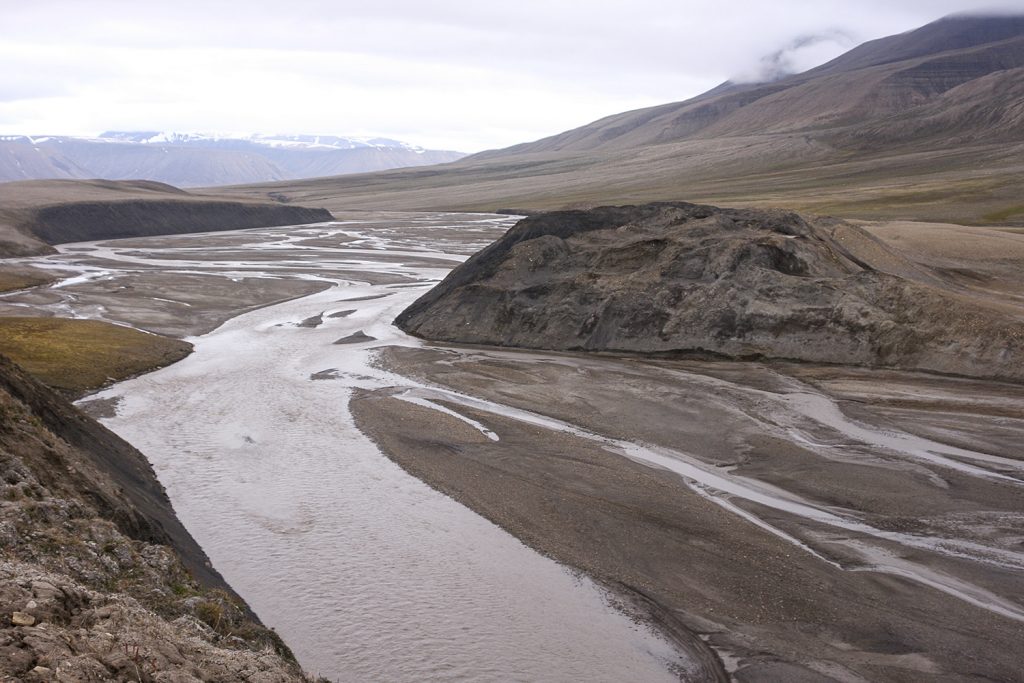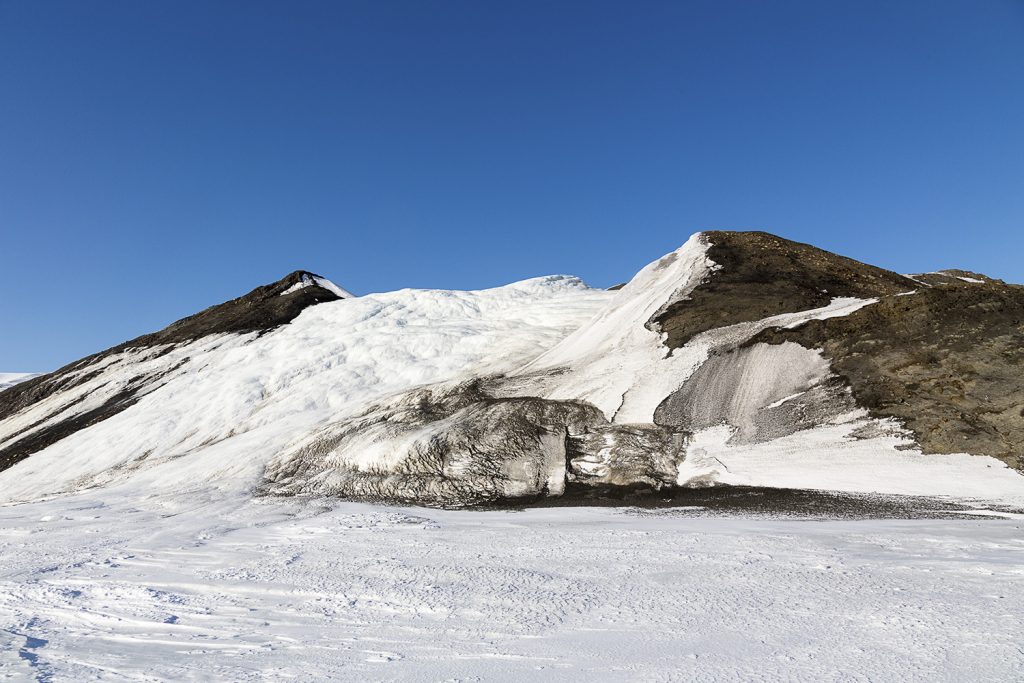A pingo is a hill that can be 10 or 20, in single cases more than 30 metres high and has a diameter of up to more than 100 metres at its base. The outer layer of soft sediment is thin and most of the volume actually consists of solid ice. Most pingos can be found on the bottom of large valleys.
An important condition is the presence of groundwater that can percolate from the catchment areas of temperate glaciers into the sub-permafrost layer, where it is under pressure, but cannot easily seep through to the surface because of the permafrost.
To reach the surface, the groundwater will has to find weak zones within the permafrost, which are often located under valley bottoms in areas with bigger rivers, which influence the sub-surface temperature regime. During the summer, groundwater can reach the surface in these areas, but as soon as the surface is frozen, it will get stuck at a shallow depths and re-freeze to form an ice body that, protected by a thin layer of sediment, can grow and survive for many years. During the summer, there is usually a small arthesian spring somewhere on the pingo, which can create a large iced-over area on and near the pingo in autumn.
The pingo nearest to Longyearbyen is at Moskuslaguna on the northern side of Adventfjord. This one is quite small. There are several prominent examples in Adventdalen.
Innerhytta, Svalbard, Norway
Adventdalen 2, Svalbard, Norway
Adventdalen 1, Svalbard, Norway
Moskuslagune, Svalbard, Norway


